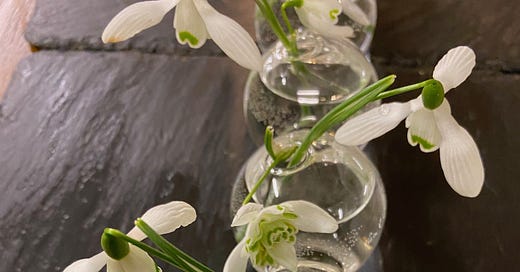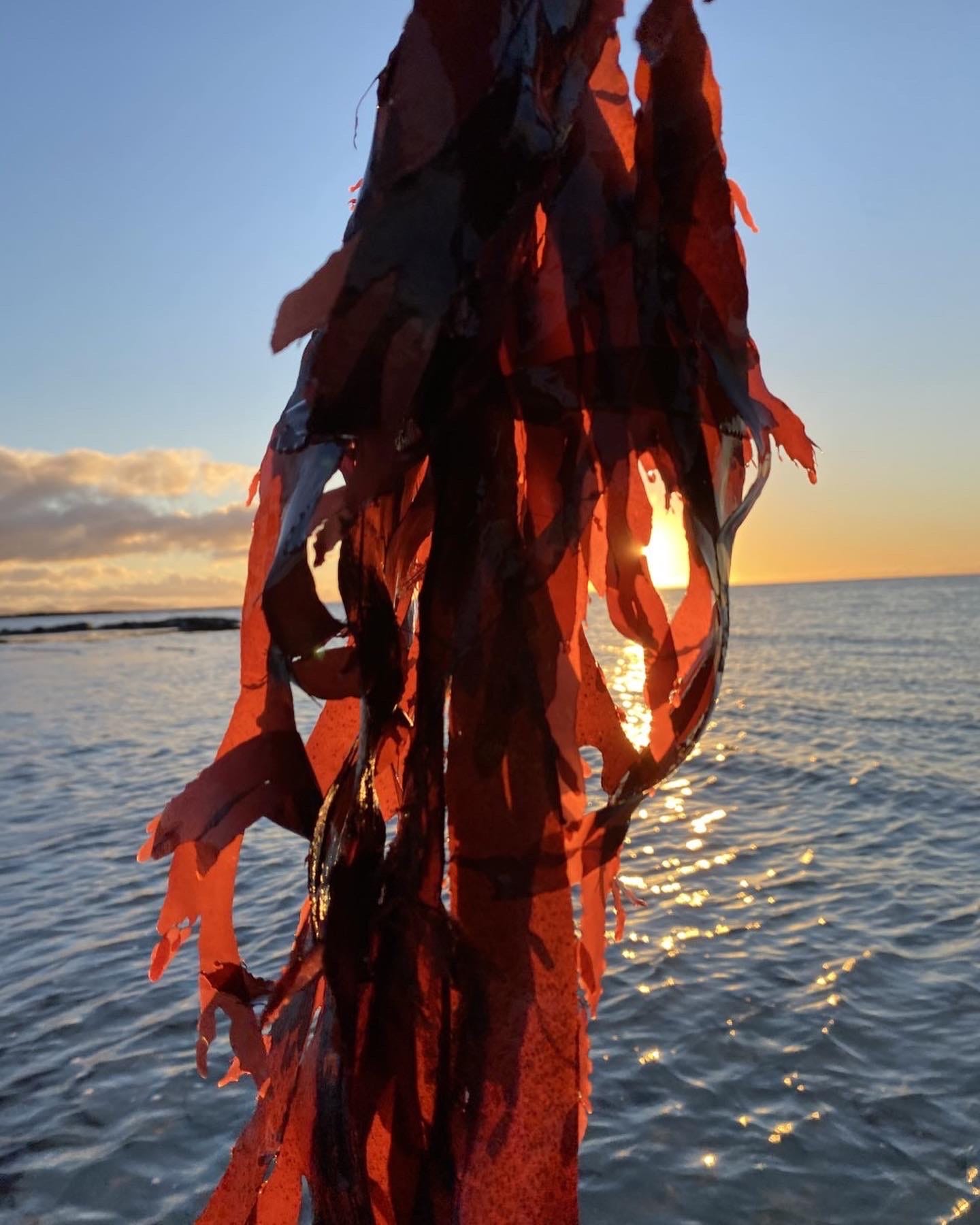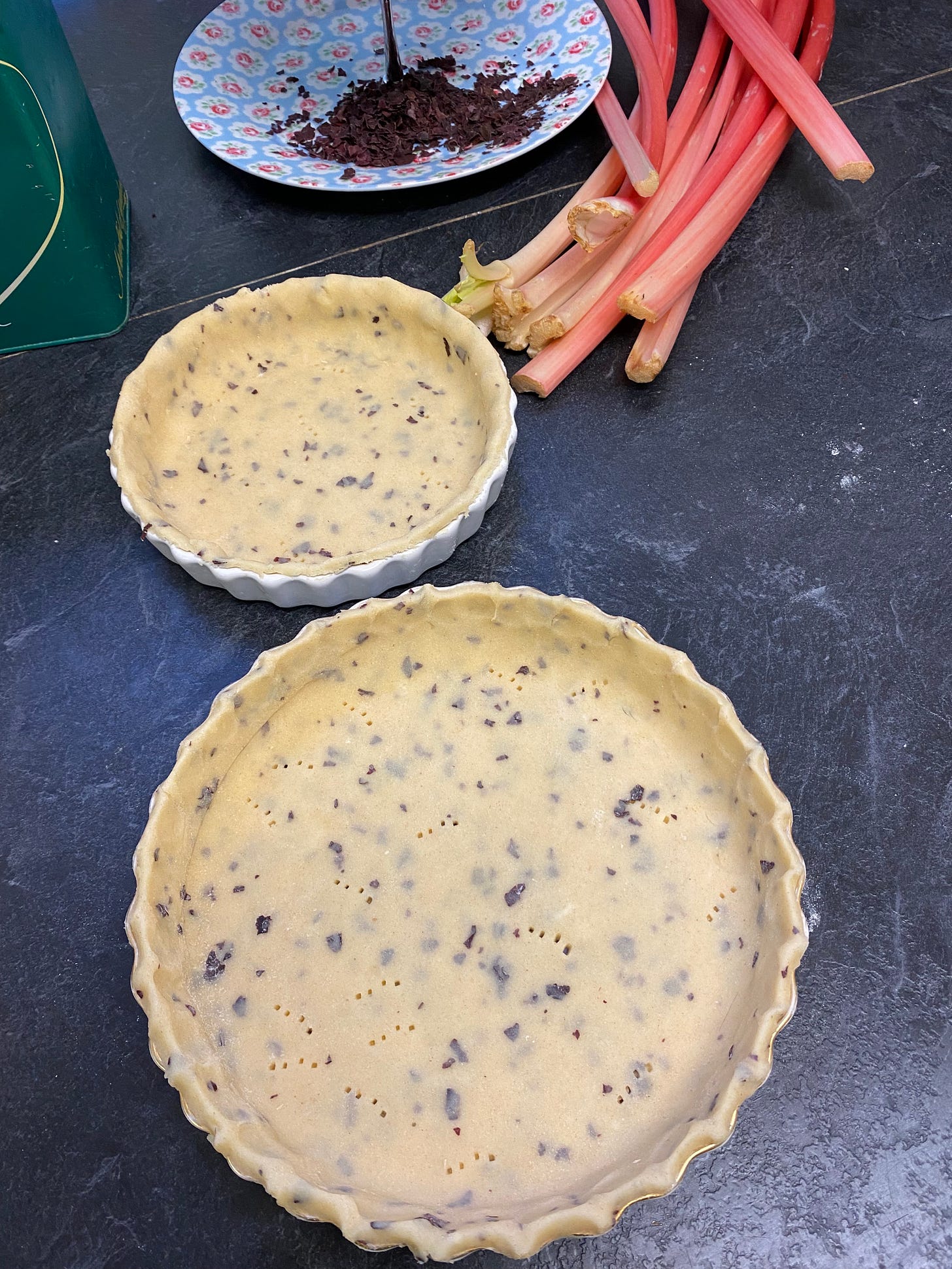Dulse, Champagne Rhubarb and Snowdrops
'The Snowdrop in purest white array, first rears her head on Candlemas day.' February also brings the reddest of forced rhubarb sticks, and at low tide, 2023 seaweeds are popping up on seaside rocks .
Mrs Lane Clarke (1812-83) writes that every child on the coast of Ireland and Scotland will tell us that Rhodymenia palmata (now named Palmaria palmata) is: Dulse, Dullisg or Dillisk – the leaf of the water. She continued that poor Irish families ate dillisk as the only relish they could have with their potatoes, and that Highland crones, steeped it in water, and gave it medicinally in fevers. On the culinary front Mrs Lane Clarke mentions that in the Islands of the Archipelago, it was a favourite addition to ragout. Ragout that’s more like it. A recipe. This recipe idea is also referenced by The Revd. David Landsborough in a Popular History of British Seaweeds (1857). Fast forward to 2023 and seaweed is making an impact in the kitchen, and not as a pauper ingredient.
The Victorian Seaweed Ladies about whom I write, in Seaweed in the Kitchen, used their drawing and creative skills to press, mount and illustrate seaweeds. Dulse would have been tricky (and this is the case for contemporary artists too), to use artistically because this seaweed absorbs moisture. If drying dulse for culinary purposes, to use at a later date, ensure you store it in an airtight. Dulse, known as dillisk in Ireland, is one of the better known seaweeds. It has been washed, dried and chewed in tobacco and chewing gum fashion, for generations. I suspect that seaweed eating coastal: sheep, cows and deer may well sift through kelp to find a tasty morsel of dulse.
Foraging dulse is relatively easy. It is common and widely distributed, often piggybacking on kelp (as an epiphyte). I have also spied it growing on bladderwrack (Fucus serratus). On the rocky Scottish coasts of Angus and Kincardineshire, dulse can be found in abundance. Its tiny stipe (think stalk) attaches itself to rocks, making it visible to the forager at low, spring tides.
Cambo Gardens, Kingsbarns, Fife.
Snowdrops and Champagne rhubarb both bring February cheerfulness. There seem to be an increasing number of snowdrop walks available throughout the UK. My Cambo Gardens (Fife) suggestion is well worth a visit. There is snowdrop money to be made for horticulturists too; last year, a snowdrop, Galanthus plicatus 'Golden Tears', sold for £1,850 plus postage, at auction. For my part, the early appearance of these honey scented, wee white flowers is heart lifting. The Latin name for snowdrop translates as milk flower of the snow. The snowdrop is aptly named. As February progresses, carpets of snowdrops push through decaying autumn leaves, and woodland streams become banked in virgin white flowers. A sight to behold. Spring.
Champagne Rhubarb (often from the Yorkshire triangle) is complemented by Seville Orange juice. if you that is, you can still find them; it’s the tail end of the Bitters’ season. If you were to be seville orange unlucky, a lemon works just as well in a rhubarb and ‘just set’ custard tart.
At the turn of this century, I was fortunate to be invited to cook in a Scottish round of Masterchef. This was the year it was presented by the celebrity chef, Gary Rhodes. That particular year, contestants were instructed to cook with ingredients chosen by the judges. My Scottish cohort was given rhubarb for a January cook off. It was extremely difficult to find champagne rhubarb for my practice runs. This year it has again, been tricky, to get hold of forced rhubarb. My thanks must go to Andrew at Les Turriff who magically found me a dozen red rhubarb sticks at The Glasgow Fruit Market. Bravo, Andrew.
I added dried dulse to the shortcrust pastry and Seville orange juice to the custard. Dulse is a red seaweed that turns green when cooked (an explanation for green not red flecks in the cooked pastry).
My last Substack post mentioned laver porridge. May I add that a spoonful of poached, rosy, forced rhubarb makes a colourful and delicious addition to porridge. Rhubarb, rhubarb, rhubarb.











